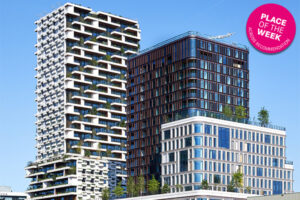By Chalid El Ashker
Pop-up shops have been more than just interim uses for brands for quite some time. They are part of every good marketing and distribution strategy – whether it is for leading companies, such as Louis Vuitton, Adidas, or Aldi, or up-and-coming and hip direct-to-consumer concepts, such as VIU Eyewear. Customers expect individual, innovative, and exclusive offers. In order to meet this Zeitgeist, this new way of retail is characterized, above all, by the following two features: Firstly, it is omnichannel and data-driven. Offline must harmonize with online and merge seamlessly. Physical space no longer has to be the place of a transaction, but it must deliver just as measurable results as an online marketing campaign. Secondly, flexibility is key: Whether for market testing, product launches, targeted live marketing, or seasonal increases in sales capacity, tenants want to remain flexible and “asset-light”. Long-term contracts and high upfront investments have become rare, even for large established brands.
The existing trend for flexible retail has been accelerated and reinforced by the measures taken as a result of the coronavirus pandemic and has led to a fundamental change in demand for retail space. Tenants tend to look for small to medium-sized retail spaces that they can immediately move into and rent flexibly for up to one year. Landlords will (have to) adapt to this new demand. According to Colliers’ UK Retail Sentiment study from May 2020, English owners of nearly nine million sq m of retail space expect the way that retail space is used and rented to change permanently. This also applies to most of Europe and the USA, not only the UK. There is some good news: Malls already have a head start in this regard.
So, why are shopping centers predestined to be pop-up landlords? Firstly, curation: They offer a harmonic overall experience as lifestyle destinations and one-stop shopping locations. Secondly, experience in flexible leasing: Malls have been renting out mall and outdoor space flexibly for a long time. In Europe, this is often not as consistent as in the USA or Asia (specialty leasing). The challenge here often lies in efficiency and finding the right tenants. Thirdly, plug and play spaces: More and more shopping centers offer built-out spaces that are ready for immediate occupancy – including furniture and a payment terminal. Fourthly, data insights: Shopping centers are controlled environments – by using smart tools, center managers have the chance to get to know their customers much better than independent retail outlets ever could. Such insights are what brands are looking for (target groups, footfall, etc.).
If food is to become a new anchor of a mall, pop-up shops definitely have the potential to become co-anchors, at least, and this is why: Firstly, the role of the shop is changing. Malls can no longer be centered solely around shopping – pop-up shops have a much wider range of concepts than only sales. They also allow a tenant to test the waters, so some pop-up leases might turn into longer-term leases. Secondly, offering flexible leases and built-out spaces will dramatically increase the tenant pool mall owners can draw from as tenants can simply “move in”, e.g., smaller but exciting local brands. Thirdly, bringing cool pop-up shops to a mall is akin to constant revitalization and will help a mall stay or become a destination; it will also help shape a mall’s image. Fourthly, exclusivity: Pop-up shops are synonymous with exclusivity due to the limited time they are available. With the right curation, they can definitely serve as one of the many reasons to visit a mall.





